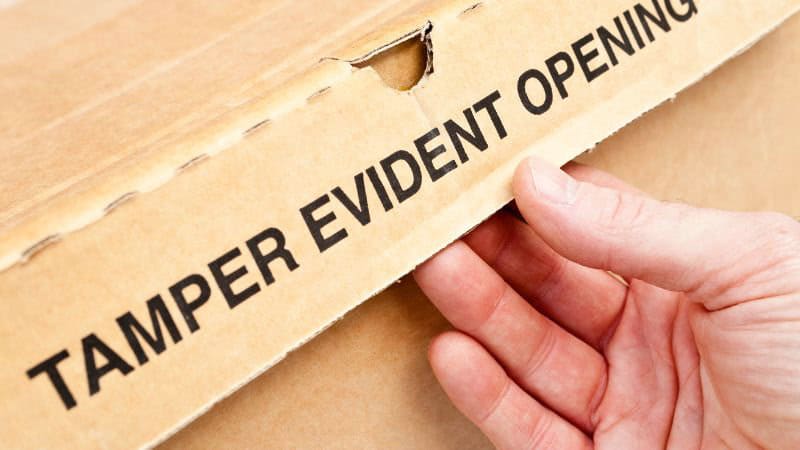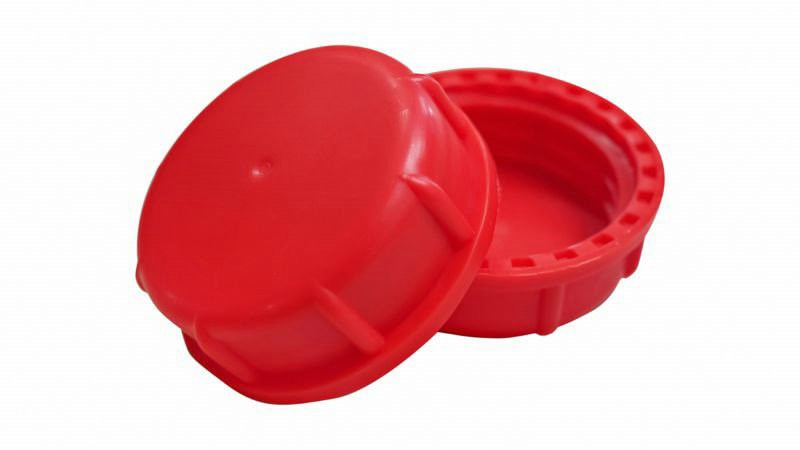
Ensuring the safety and integrity of consumer products is more critical than ever. From beverages and food packaging to pharmaceuticals and electronics packaging, tamper-proof packaging plays a vital role in protecting both consumers and businesses.
In this article, we’ll take a closer look at what tamper-proof packaging entails, the different types available, and the key benefits it provides to both businesses and consumers. Whether you’re an established brand looking to bolster your packaging security or a new business seeking to build customer trust, understanding the ins and outs of tamper-proof packaging is crucial in today’s market. Let’s dive in and explore this essential topic in product safety and brand integrity.
What is Tamper-Proof Packaging
Tamper-proof packaging, also known as tamper-evident or tamper-resistant packaging, is designed to provide visible evidence if a product has been interfered with or opened before reaching the end consumer. The main purpose is to ensure product integrity and safety, especially for items like food, pharmaceuticals, and other sensitive goods.
Types of Tamper-Proof Packaging
There are several types of tamper-proof packaging:
- Shrink bands or sleeves – Plastic bands or sleeves that are shrunk tightly around lids or openings using heat. They must be torn or cut to access the product, providing clear evidence of opening. Commonly used on beverage bottles, food jars, ice cream containers, etc.
- Breakable seals – Caps or lids that have breakable rings, tabs, or buttons that visibly detach or make a popping sound on the first opening, such as on milk jugs, medicine bottles, food jars, etc.
- Sealed pouches or containers – Pouches, bags, or rigid containers sealed with a tear strip, perforated opening, or pull tab that leaves obvious damage when opened. Used for foods, pet foods, pharmaceuticals, and more.
- Induction seals or lidding films – Foil or plastic film seals that are heat-sealed to the rim of jars or containers and must be peeled or punctured to open. The broken seal can’t be replaced. Common on food jars, dairy tubs, cosmetics, etc.
- Blister or bubble packs – Plastic packaging with individually sealed cavities for each product that show damage if opened. Frequently used for medications, electronics, and small consumer goods.
- Security tapes – Adhesive tapes or labels that leave behind a “void” or “opened” residue message if removed from the packaging. Used on shipping boxes, mailing bags, and product packaging.
- Tamper-evident containers – Rigid plastic containers with compatible lids that snap on securely and can’t be opened without visible damage. Popular for food, pharmaceutical, and industrial uses.
- Tamper-resistant cartons – One common tamper-resistant feature on cartons is tear strips. These strips, made of paper or plastic, are placed over the opening of the carton. When the perforated strip is pulled to open the carton, it tears off completely, providing a visible indication that the package has been opened.
Each type is chosen based on the product’s needs and the level of security required.
What are the Benefits of Tamper-Proof Packaging?
Visible Signs of Tampering
Tamper-evident packaging includes features that show visible signs of tampering. These signs make it easy for you to see if someone has interfered with the product.
For example, packaging might change color or have broken seals if it has been tampered with. These signs are clear and can’t be fixed without leaving evidence, helping you quickly identify any issues.
Seals and Indicators
Special seals and indicators are used to provide security in tamper-evident packaging. Breakable seals ensure that the package cannot be opened without leaving traces.
Some packages have indicators like tamper-evident tapes or labels. These seals and indicators are designed to break apart or show a message if tampered with, giving you a clear signal if something is wrong.
Security Measures in Packaging
Security measures add another layer of protection to tamper-evident packaging. This can include child-resistant features to prevent little ones from accessing harmful content.
Non-repairable designs mean once the package is opened, it can’t be resealed without evident damage. This ensures that customers can have a peace of mind to trust the product’s integrity until it reaches their hands.
The Normal Regulatory Standards of Tamper-Proof Packaging

Tamper-proof packaging must meet specific regulations to ensure safety and integrity across different industries. These standards ensure the packaging is effective and reliable in protecting products from tampering.
FDA Regulations
The U.S. Food and Drug Administration (FDA) has strict rules for tamper-proof packaging, especially for over-the-counter (OTC) drugs.
Here are the key points:
- The FDA requires packaging to be tamper-evident, meaning it must show clear signs if tampered with.
- Packaging must be designed so it’s hard to alter without evidence.
- Labels must include tamper-evident features and be placed prominently to be effective.
International Standards
Different countries have their own standards, but many follow guidelines set by organizations like the International Organization for Standardization (ISO).
Here are some important facts:
- The ISO 21976:2018 standard outlines requirements for tamper-evident features in medicinal packaging.
- These standards cover seal types and methods for ensuring packaging integrity
Industry-Specific Regulations
Different industries have unique needs and regulations for tamper-proof packaging. Examples:
- Pharmaceutical: Beyond FDA and ISO standards, companies must follow additional rules to ensure drug safety.
- Food and Beverage: Packaging must not only show signs of tampering but also protect against contamination.
- Consumer Goods: Regulations may vary depending on the product type, ensuring appropriate tamper protection.
Each industry tailors its regulations to address specific product safety concerns, ensuring comprehensive protection.
Technological Innovations in Tamper-Proof Packaging
Recent advancements in packaging technology improve product safety and usability. Security is enhanced with advancements like security tapes and holographic seals.
Security tapes show clear signs if a package has been opened, preventing unauthorized access. This is critical for pharmaceuticals and high-value items.
Holographic seals and special inks make counterfeiting harder. They provide visual confirmation that a package hasn’t been tampered with.
Traceability technologies help ensure each product is genuine. By scanning a code, you can check a product’s entire history, from manufacturing to delivery. This level of traceability supports brand transparency and consumer trust.
NFC (Near Field Communication) is another emerging tech that allows for secure, short-range communication between packages and your smartphone. This can verify product authenticity and provide additional security measures.
The Benefits of Using Tamper-Proof Packaging for Brand

Brands that use tamper-proof packaging gain a strong reputation for prioritizing safety. This can set them apart from competitors in the market.
When customers see that a company goes the extra mile to prevent tampering, it positively impacts the brand’s image. People tend to associate these brands with quality and responsibility.
Using this type of packaging helps the brand appear professional and trustworthy. This has a lasting effect on how consumers view the brand. This can drive sales and foster a strong, positive perception among consumers.
Frequently Asked Questions
How can you tell if a package is tamper-proof?
Tamper-proof packaging often includes seals, bands, or special closures that must be broken or damaged to access the product. Look for visible signs such as broken seals, shrink wraps, or packaging that doesn’t close properly.
What are some common types of tamper-proof packaging in the food industry?
In the food industry, tamper-proof packaging includes shrink bands, induction seals, and tamper-evident tapes. These types of packaging are designed to ensure that the food you buy has not been tampered with before it reaches you.
Can you provide examples of tamper-resistant packaging designs in the pharmaceutical sector?
In the pharmaceutical sector, tamper-resistant designs include blister packs, strip seals, and bottle caps with breakable rings. These designs make it challenging to open the package without leaving clear evidence of tampering, ensuring that medications remain safe and effective for your use.
